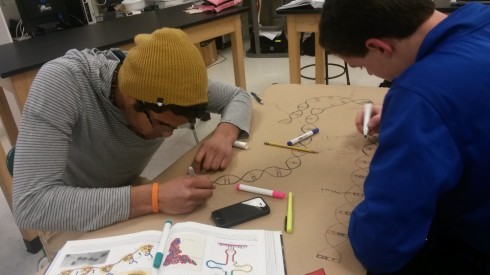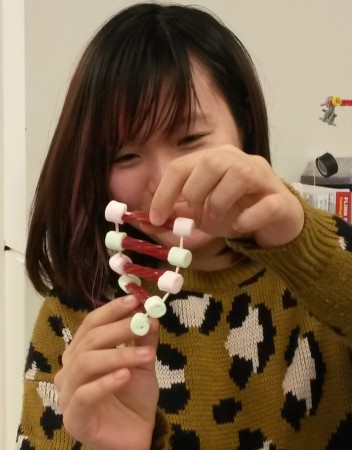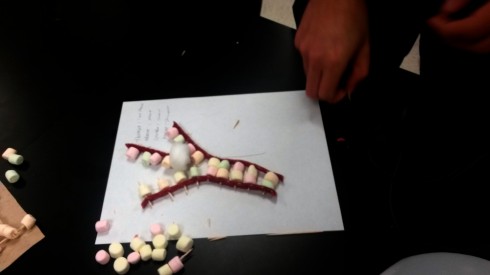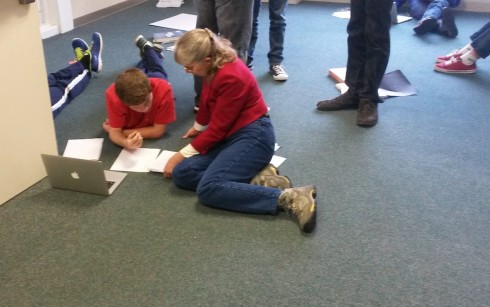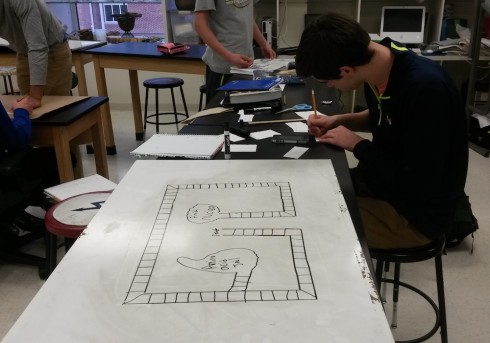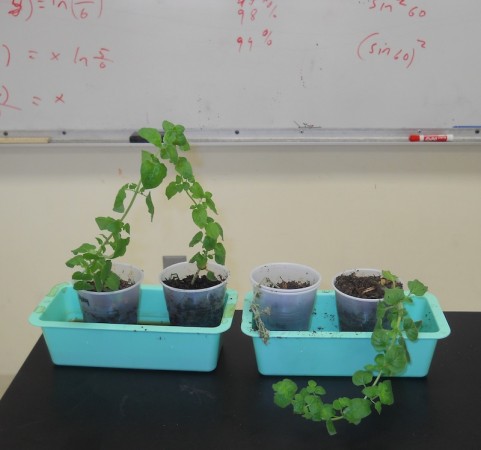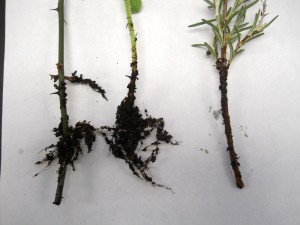The Gardening Department of our Student-Run-Business sowed seeds in little coconut husk pellets. The question was: how many seeds should we plant per pellet.
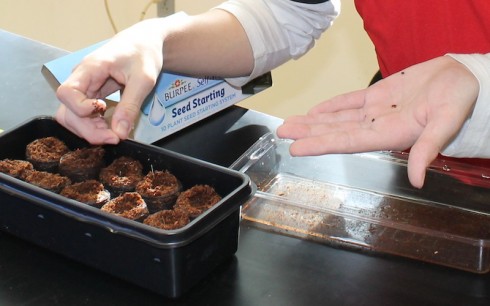
Since we’ll only let one seedling grow per pellet, and cull the rest, the more seeds we plant per pellet, the fewer plants we’ll end up with. On the other hand, the fewer seeds we plant (per pellet) the greater the chance that nothing will grow in a particular pellet, and we’ll be down a few plants as well. So we need to think about the probabilities.
Fortunately, I’d planted a some tomato seeds a couple weeks ago that we could use for a test case. Of the 30 seeds I planted, only 20 sprouted, giving a 2/3 probability that any given seed would grow:
![]()
So if we plant one seed per pellet in 10 pellets then in all probability, only two thirds will grow (that’s about 7 out of 10).
What if instead, we planted two seeds per pellet. What’s the probability that at least one will grow. This turns out to be a somewhat tricky problem–as we will see–so let’s set up a table of all the possible outcomes:
| Seed 1 | Seed 2 |
|---|---|
| grow | grow |
| grow | not grow |
| not grow | grow |
| not grow | not grow |
Now, if the probability of a seed growing is 2/3 then the probability of one not growing is 1/3:
![]()
So let’s add this to the table:
| Seed 1 | Seed 2 |
|---|---|
| grow (2/3) | grow (2/3) |
| grow (2/3) | not grow (1/3) |
| not grow (1/3) | grow (2/3) |
| not grow (1/3) | not grow (1/3) |
Now let’s combine the probabilities. Consider the probability of both seeds growing, as in the first row in the table. To calculate the chances of that happening we multiply the probabilities:
![]()
Indeed, we use the ∩ symbol to indicate “and”, so we can rewrite the previous statement as:
![]()
And we can add a new column to the table giving the probability that each row will occur by multiplying the individual probabilities:
| Seed 1 | Seed 2 | And (∩) |
|---|---|---|
| grow (2/3) | grow (2/3) | 4/9 |
| grow (2/3) | not grow (1/3) | 2/9 |
| not grow (1/3) | grow (2/3) | 2/9 |
| not grow (1/3) | not grow (1/3) | 1/9 |
Notice, however, that the two middle outcomes (that one seed grows and the other fails) are identical, so we can say that the probability that only one seed grows will be the probability that the second row happens or that the third row happens:
![]()
When we “or” probabilities we add them together (and we use the symbol ∪) so:
![]()
You’ll also note that the probability that neither seed grows is equal to the probability that seed one does not grow and seed 2 does not grow:
![]()
So we can summarize our possible outcomes a bit by saying:
| Outcome | Probability |
|---|---|
| both seeds grow | 4/9 |
| only one seed grows | 4/9 |
| neither seed grows | 1/9 |
What you can see here, is that the probability that at least one seed grows is the probability that both seeds grow plus the probability that only one seed grows, which is 8/9 (we’re using the “or” operation here again).
In fact, you can calculate this probability by simply taking the opposite probability that neither seeds grow:
![]()
Generalizing a bit, we see that for any number of seeds, the probability that none will grow is the multiplication of individual probability that one seed will not grow:
Probability that no seeds will grow
| Number of seeds | Probability they wont grow | |
|---|---|---|
| 1 | 1/3 | (1/3)1 |
| 2 | (1/3)×(1/3) = 1/9 | (1/3)2 |
| 3 | (1/3)×(1/3)×(1/3) = 1/27 | (1/3)3 |
| n | (1/3)×(1/3)×(1/3)×… | (1/3)n |
So to summarize, the probability that at least one plant will grow, if we plant n seeds is:
![]()
which is:
![]()
Which is something we may have seen before: What are the odds?
Finally to answer our question: how many seeds we should plant, we need to decide how high a probability we need of success:
Probability that at least one seed will grow
| Number of seeds | Probability that at least one seed will grow | % |
|---|---|---|
| 1 | 2/3 | 67% |
| 2 | 8/9 | 89% |
| 3 | 26/27 | 96% |
| 4 | 80/81 | 99% |
| n | 1-(1/3)n |

